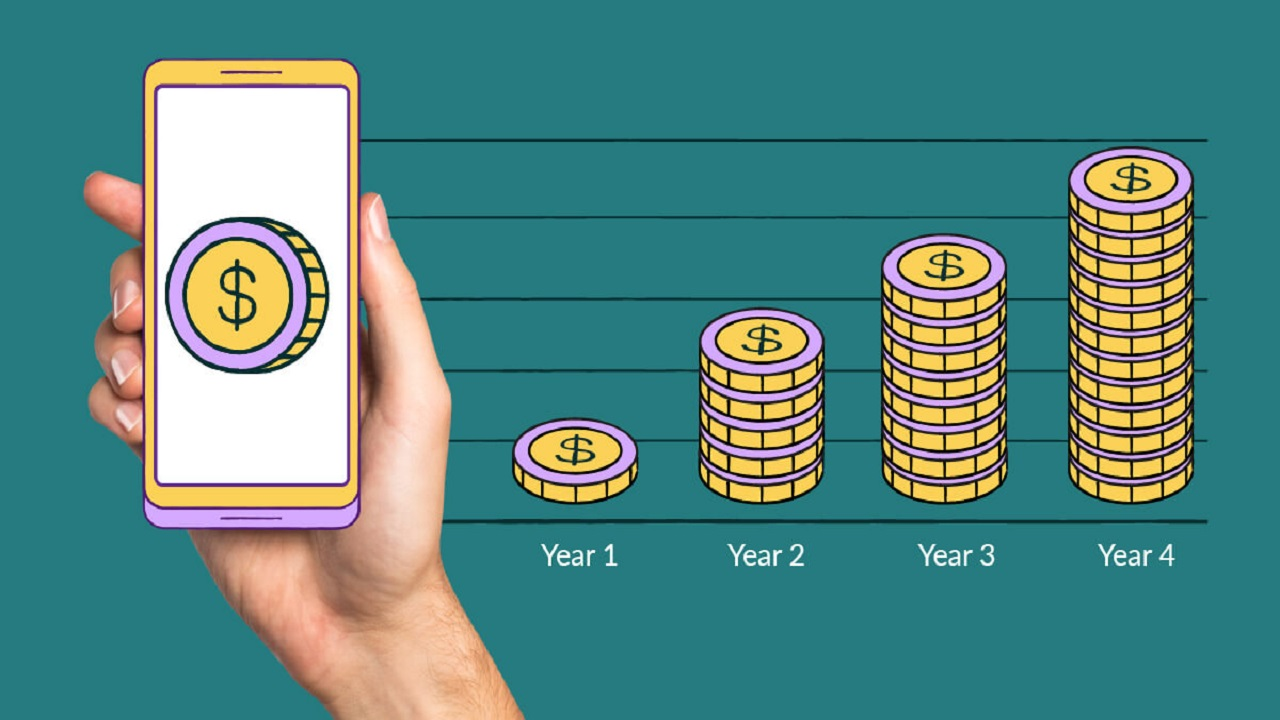Key Financial Trends Shaping 2025: Innovations, Challenges, and Opportunities
The world of finance is undergoing significant changes, driven by technological advancements, evolving consumer demands, and a shifting global economic landscape. As we look ahead to 2025, financial institutions, businesses, and consumers alike are navigating new challenges and seizing emerging opportunities. From the continued rise of fintech to a growing emphasis on sustainable investments, the finance industry is poised for a transformational decade. In this article, we’ll explore the key financial trends expected to dominate in 2025 and how they will shape the future of finance.
1. The Rise of Digital Banks and Neobanks
The digital banking sector is booming, with neobanks (digital-only banks) taking the spotlight. Unlike traditional banks, neobanks operate entirely online, offering financial services through mobile apps and websites without the need for physical branches. They are fast becoming a viable alternative to traditional banking, offering lower fees, greater transparency, and innovative features.
By 2025, the global neobank market is expected to grow at an unprecedented rate. Here’s why digital banks are gaining traction:
- Convenience: Digital banks allow users to access their accounts, transfer money, and apply for loans all through their smartphones, 24/7. This level of convenience is highly appealing to tech-savvy consumers.
- Lower Fees: Traditional banks often charge high fees for services like overdrafts, ATM withdrawals, and monthly maintenance. Neobanks, on the other hand, offer services with little to no fees, making them attractive to younger consumers and those seeking affordable alternatives.
- Better Customer Experience: With seamless user interfaces, quick customer support, and personalized financial advice powered by AI, digital banks are setting a new standard for customer service.
- Financial Inclusion: Neobanks are helping bridge the gap for underbanked populations by offering low-cost banking services to those who previously had limited access to traditional banking options.
As digital banking becomes more mainstream, traditional financial institutions will need to innovate and adapt to keep up with this growing trend.
2. Artificial Intelligence and Machine Learning in Finance
Artificial Intelligence (AI) and Machine Learning (ML) are transforming the financial sector, streamlining operations, reducing risk, and improving customer service. Financial institutions are increasingly relying on AI to manage vast amounts of data, make smarter decisions, and enhance their offerings.
Key applications of AI in finance include:
- Automated Customer Support: AI-powered chatbots and virtual assistants are handling customer queries, processing transactions, and even providing personalized investment advice. These tools are available 24/7, ensuring customers receive immediate assistance.
- Fraud Detection: AI and ML algorithms are used to detect unusual transaction patterns and flag potential fraudulent activity in real-time. These technologies can analyze large datasets much faster than humans, helping financial institutions respond to threats quickly.
- Credit Scoring: Traditional credit scoring models have limitations. AI is changing the game by evaluating a broader range of data (e.g., spending habits, social media activity) to assess an individual’s creditworthiness more accurately.
- Algorithmic Trading: AI-powered algorithms are being used to predict market trends and execute trades automatically. These systems can process vast amounts of data to make split-second decisions, helping investors capitalize on opportunities in real-time.
As AI and ML technologies continue to evolve, financial firms will be able to offer more personalized services, improve operational efficiencies, and reduce risk, making them a cornerstone of the future of finance.
3. The Expansion of Cryptocurrency and Blockchain Technology
Cryptocurrency and blockchain technology continue to gain traction, even as regulatory frameworks begin to catch up. In 2025, the cryptocurrency market is expected to reach new heights, with more institutional investors and governments embracing digital currencies as part of the global financial system.
Key developments to watch in the world of crypto and blockchain include:
- Regulation and Legitimacy: As cryptocurrencies become more mainstream, governments around the world are developing clearer regulatory frameworks to govern their use. This will reduce uncertainty, making cryptocurrencies more appealing to both individual and institutional investors.
- Central Bank Digital Currencies (CBDCs): Several countries, including China and the European Union, are experimenting with or planning to launch their own digital currencies issued by central banks. These digital currencies could complement or even replace traditional money, offering faster, more secure transactions while reducing the cost of handling physical currency.
- Decentralized Finance (DeFi): DeFi platforms leverage blockchain technology to offer financial services like lending, borrowing, and insurance without intermediaries such as banks. This decentralized approach is transforming the way people access financial services, especially in emerging markets where traditional banking infrastructure is lacking.
- NFTs and Digital Assets: Non-fungible tokens (NFTs) have expanded beyond digital art into sectors like gaming, real estate, and entertainment. Blockchain technology is being used to create and transfer ownership of digital assets securely, and NFTs could become a key asset class in the coming years.
Cryptocurrency and blockchain are poised to revolutionize the financial system, and businesses that embrace these technologies early will have a competitive edge as the digital economy continues to grow.
4. The Rise of Environmental, Social, and Governance (ESG) Investing
Sustainability is no longer just a buzzword—it’s becoming a key factor in investment decisions. ESG investing focuses on companies that meet specific environmental, social, and governance criteria, such as reducing carbon emissions, ensuring fair labor practices, and maintaining strong corporate governance.
In 2025, ESG investing is expected to grow substantially. According to a recent report, over $40 trillion in assets will be invested in ESG-focused funds by 2025. Here’s why ESG investing is on the rise:
- Consumer Demand: As consumers become more environmentally conscious, they are demanding that businesses take responsibility for their impact on the planet. Investors are responding by directing their capital toward companies that prioritize sustainability and ethical practices.
- Corporate Responsibility: Companies that focus on ESG factors are often seen as less risky and more future-proof. By investing in these companies, investors are betting on businesses that are better positioned to thrive in a rapidly changing world.
- Government Regulations: Governments around the world are implementing stricter regulations on environmental and social standards. This will drive companies to align their practices with ESG criteria to comply with regulations and avoid reputational damage.
- Long-Term Returns: Studies have shown that companies with strong ESG practices tend to outperform their peers in the long term. Investors are increasingly viewing ESG investing as not only a socially responsible choice but also a smart financial strategy.
As ESG factors become increasingly important, investors and businesses alike will need to prioritize sustainability and social responsibility to stay competitive in the global market.
5. Digital Payments and the Cashless Society
The shift toward a cashless society is accelerating, driven by advancements in mobile payments, digital wallets, and contactless technologies. By 2025, it’s estimated that over 60% of transactions worldwide will be cashless, with mobile payments playing a central role.
Key trends in digital payments include:
- Mobile Wallets: Platforms like Apple Pay, Google Pay, and PayPal are making it easier for consumers to make secure transactions directly from their smartphones. These wallets are becoming the preferred method of payment for online and in-person purchases.
- Cryptocurrency Payments: As cryptocurrencies become more widely accepted, digital currencies like Bitcoin and Ethereum are being used for transactions at an increasing number of businesses. Blockchain-based payments offer faster and more secure options than traditional banking systems.
- Biometric Authentication: To improve security, biometric authentication methods like facial recognition and fingerprints are being used for payments, replacing PIN codes and passwords.
- Cross-Border Payments: Traditional international money transfers can be slow and expensive. Digital payment systems, particularly those using blockchain technology, offer faster and cheaper cross-border transactions, making it easier for businesses to expand globally.
The digital payments ecosystem is transforming how consumers and businesses handle money. For businesses, embracing cashless solutions will be essential to meeting consumer expectations and remaining competitive in an increasingly digital world.
6. Financial Education and Empowerment
As financial tools and technologies become more complex, there’s a growing need for financial education and literacy. In 2025, we expect an increase in financial empowerment initiatives aimed at helping individuals manage their finances more effectively.
Key areas of focus include:
- Personal Finance Apps: Apps like Mint, YNAB (You Need a Budget), and personal finance platforms that integrate banking and investment services are helping individuals take control of their finances by providing easy-to-understand insights and budgeting tools.
- Financial Literacy Programs: Governments and organizations are investing in programs that teach financial literacy from an early age, focusing on key topics like budgeting, investing, and retirement planning.
- Investment Access: Platforms like Robinhood and Acorns have democratized investing, allowing individuals to invest with little to no capital. As these platforms continue to grow, more people will be able to access wealth-building opportunities that were once reserved for the affluent.
By empowering consumers with financial knowledge and tools, businesses and financial institutions can help build a more financially stable society, driving long-term economic growth.
Conclusion
The finance industry is on the cusp of a major transformation, fueled by technological advancements, changing consumer expectations, and growing emphasis on sustainability. As we move into 2025, businesses, investors, and consumers must stay informed and agile to take advantage of the opportunities that lie ahead. Whether it’s embracing digital banking, adopting AI, investing in ESG-friendly companies, or leveraging digital payment solutions, the future of finance is ripe with potential.
Companies and individuals who adapt to these trends will be well-positioned to thrive in the rapidly evolving financial landscape. The coming years will not only reshape how we manage money but also offer new pathways for financial inclusion, economic growth, and sustainability.













